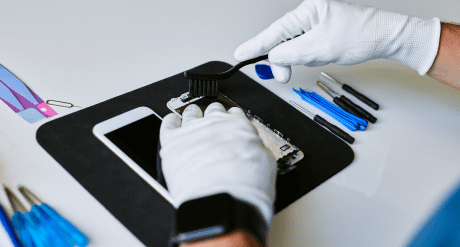
The Weekly Pulse: 12th Sep – 16th Sep

What’s HOT in our Regulatory World at the moment?
What are our clients looking at?
This week’s trending sources in C2P
- UK: Product Safety and Metrology (Amendment), Draft Regulations, September 2022
- EU: Registration, Evaluation, Authorisation and Restriction of Chemicals (REACH), Regulation (EC) 1907/2006 – Proposed Amendment – (on adding synthetic polymer microparticles to Annex XVII) Draft Regulation, September 2022
- UK: Electrical Equipment Designed for Use Within Certain Voltage Limits – Designated Standards, Notice 0009/21 – Amendment – (on updating the list of standards) Notice 0065/22
What is our Content Team talking about?
New York (USA) – Draft Program Policy on Process for Annual Reporting of Flame Retardants in Electronic Displays – Kelly Bugiera
The New York State Department of Environmental Conservation (DEC) is in the process of developing a new program that is intended to help implement portions of the Environmental Conservation Law.
By December 31, 2022, manufacturers of electronic displays who sell their products in New York State must report the presence of organohalogen flame retardants in enclosures or stands of their electronic displays.
DEC has published a Draft Program Policy, DMM-6, which establishes the process for manufacturers to follow when submitting the necessary report. The policy and instructions, as well as a draft of the reporting form, can be downloaded here:
Guidelines for Annual Reporting of Organohalogen Flame Retardants per ECL 37-10… (PDF)
DRAFT of Annual Report for Organohalogen Flame Retardant Chemicals in Enclosure… (MS Excel spreadsheet)
DEC is accepting public comments on this Draft Program Policy and written public comments may be submitted using email to FlameRetardants@dec.ny.gov or via mail until October 7, 2022, at 5:00 p.m. EDT.
What are our Knowledge Partners talking about?
UK Supreme Court rules on whether a product is defective – Cooley
In an important judgment for manufacturers, the UK Supreme Court (‘UKSC’) in Hastings v Finsbury Orthopaedics Ltd & Another [2022] UKSC 19 endorsed statements of principle for determining whether a product is defective for the purposes of the UK’s Consumer Protection Act 1987 (‘CPA’) from two first instance decisions and supported the view that there can be no entitlement to an absolute level of safety for certain products.
The UKSC also held that generalised expressions of professional concern, the issuing of official notices and alerts by both regulators and the manufacturer and the withdrawal of the entire product range from the market did not amount to prima facie evidence that the product was defective when considered in light of surrounding evidence.
Below we provide a brief overview of the restriction proposal and what it entails.
The Law
The CPA implemented the EU’s Product Liability Directive in the UK, which establishes a strict liability regime to enable claimants to seek compensation for defective products. To claim under the CPA, a claimant does not need to prove fault on the part of the ‘producer’ (normally, the product manufacturer or importer). Instead, they merely need to prove that:
- the product was defective;
- they suffered damage; and
- there was a causal link between the defect and the damage the claimant suffered.
The test to determine defect is whether the safety of the product is below that which consumers are generally entitled to expect.
This is an objective test and section 3 of the CPA sets out the factors to be considered.
Two first instance decisions, endorsed by the UKSC in Hastings, provide guidance as to the principles for determining defect.
The Dispute
Hastings concerned a metal-on-metal prosthetic hip replacement (the ‘MoM product’).
The appellant, Mr Hastings, who underwent a total hip replacement, alleged that the MoM product was defective and sought damages against the defendant under the CPA.
It was common ground that the statistical evidence was not sufficient to establish that the MoM product was defective and the question on appeal was whether there was prima facie evidence giving rise to a non-rebuttable presumption that proved the claimant’s case, namely: (1) generalised expressions of professional concern regarding MoM hip implants by the orthopaedic community; (2) the issuing of official notices and alerts by both regulators and the respondents; and (3) the conduct of voluntarily withdrawing the MoM product from the market.
The UKSC judgement
The UKSC held that the above factors were not automatic proof of a defect and when considered in light of other surrounding evidence, including up-to-date information, were not determinative to prove that the MoM product in this case was defective.
The following elements of the judgment should be noted:
- The UKSC endorsed the test in recent case law for determining defect under the CPA.
The UKSC endorsed statements of principle for determining whether a product is defective for the purposes the CPA under the test from two first-instance decisions: Wilkes v DePuy [2016] EWHC 3096 (QB) and Colin Gee & Others v DePuy International Ltd [2018] EWHC 1208 (QB).
The UKSC reiterated that the test as to whether a product is defective (i.e., whether the safety of a product fails to meet the level of safety persons are generally entitled to expect) is an objective one: the test does not consider what the claimant expects, rather it is one of ‘entitled expectation’. The standard of safety is measured by what the public at large is entitled to expect.
The UKSC affirmed that entitled expectation is to be assessed having regard to all the circumstances which are factually or legally relevant to the evaluation of safety.
The relevant period for consideration is the time when the product was supplied by its producer to another – the assessment of risks associated with a product, which might inform entitled expectations to safety, is to be done at the time the product is supplied, and not with the benefit of hindsight.
In assessing whether the product meets the level of safety persons generally are entitled to expect, however, the court is entitled to have regard to everything relevant, irrespective of whether that information was available at the time the product was placed on the market or has come to light subsequently. - There can be no entitlement to an absolute level of safety.
The UKSC endorsed the approach to the qualification of ‘expectation’ applied in the first instance decision Colin Gee, concluding that there can be no entitlement to an absolute level of safety for products like MoM hip implants – where a propensity to wear (eg shedding metal debris that might cause soft tissue damage) is a natural occurrence for such products and cannot be, of itself, a defect. The parties and lower court agreed that the relevant test was whether the level of safety of the MoM product in this case would not be worse than existing non-MoM hip implants that would otherwise have been used. - Generalised expressions of professional concern were not determinative of a defect for the specific product in issue.
The claimant attempted to rely on generalised concerns related to the performance of MoM hip implants in general.
The UKSC held that, given the wide range of revision rates associated with MoM hip implants, these generalised expressions of professional concern did not establish that the specific MoM product was defective.
Although the door was not closed on the use of more broadly applicable data, it was clear the UKSC considered that generally product-specific evidence would be required to establish defect. - Field safety notices and medical device alerts were considered in light of subsequent up-to-date evidence.
The UKSC held that field safety notices and medical device alerts issued by regulators and the manufacturer were not prima facie evidence of a defect.
Instead, these needed to be considered in the round and the approach taken at first instance – which involved prioritising the statistical evidence presented – was considered appropriate by the UKSC. - A product recall did not automatically amount to evidence of a defect.
In Hastings, the manufacturer voluntarily withdrew the entire product range from the market. The claimant attempted to argue that this was prima facie evidence of defect and that, as a consequence of this withdrawal, there was insufficient statistical evidence available to prove the MoM product was defective. As a result, the claimant argued there should be a relaxation or adjustment of the standard of evidence needed. The UKSC did not give foundation to this argument and held that the relevance of the MoM product being withdrawn was limited by the findings at first instance that the withdrawal was due to commercial considerations (eg falling sales). The UKSC did not consider whether the recall of a product without a commercial basis would be evidence of defect – though it seems likely, based on its reasoning, that it would not have considered this determinative.
Comment
In many ways, Hastings represents a reaffirmation of recent thinking, rather than a re-think. Product manufacturers are likely to welcome the decision, given its continued emphasis on the importance of statistical evidence, and considering defect in the round. On the other hand, consumer organisations and claimant law firms are likely to voice concerns that the entrenchment of this approach creates further access to justice issues.
Wherever you stand, it seems likely that we will see further policy discussion of these issues soon. The EU is due to publish its plans for reforming the Product Liability Directive before the end of the year. Although the UK is no longer a member of the EU, this is likely to reignite the debate in the UK, where these rules were implemented by the CPA.
The EU is considering significant changes to the liability framework – including some that would cut across the approach taken in Hastings by, for example, allowing an assumption of defect in cases of recall. So, it remains possible that a UK policy re-think could be on the way. Plus, with some commentators already wondering whether Hastings was the right test case, it is likely there remains appetite for similar claims, particularly following on from recalls or other corrective action, in the near future.
What are our Clients asking about?
Do You Have Any Information Or Updates About The New Proposal From Turkey About Made In Turkiye? Answer by Dila Sen
Following an official letter submitted to the United Nations by the Republic of Türkiye, the country’s name has been officially changed to Türkiye at the UN on 3 June 2022. Here is the link for this info
Regarding the transition period to the use of the expression of “Türkiye”, there is no update, yet. The last letter was on 28 December 2021 and with this letter, the transition period is abolished and no definite deadline has been given for the transition process. It has been stated that the phrase “Made in Turkey” can be used in export transactions until a second instruction.
However, the first transition period was 1 March 2022 and then this is abolished. Therefore, it is recommended that exporting companies be prepared for a possible end date for the transition period.
Circular 2021/24, Use of the Expression of “Türkiye” as a Trademark here.
The first letter on 16 December 2021 here.
The second letter on 28 December 2021 here.
We are actively monitoring the situation and will provide alerts in relation to an updates to this in a timely manner.
Stay Updated On Global Regulations
This information is based on the most viewed regulations on C2P this month.
Sign up to get the latest compliance news delivered to your inbox weekly, for free!
The Pulse – Weekly Newsletter
Get the latest compliance news delivered straight to your inbox









